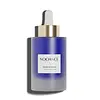What's inside
What's inside
 Key Ingredients
Key Ingredients

 Benefits
Benefits

 Ingredients Side-by-side
Ingredients Side-by-side

Pyrus Malus Leaf Extract 83%
Skin ConditioningGlycerin
HumectantMethylpropanediol
SolventWater
Skin ConditioningButylene Glycol
HumectantDipropylene Glycol
HumectantGlycereth-26
HumectantChondrus Crispus Extract
Skin ConditioningSaccharum Officinarum Extract
MoisturisingPyrus Pyrifolia Fruit Extract 0.1%
EmollientSodium Hyaluronate
HumectantTheobroma Cacao Seed Extract
AntioxidantHydroxyethyl Urea
HumectantPanthenol
Skin Conditioning1,2-Hexanediol
Skin ConditioningPolyglyceryl-10 Laurate
Skin ConditioningAcrylates/C10-30 Alkyl Acrylate Crosspolymer
Emulsion StabilisingCaprylyl Glycol
EmollientTromethamine
BufferingSodium Phytate
Allantoin
Skin ConditioningDextrin
AbsorbentXanthan Gum
EmulsifyingPyrus Malus Leaf Extract 83%, Glycerin, Methylpropanediol, Water, Butylene Glycol, Dipropylene Glycol, Glycereth-26, Chondrus Crispus Extract, Saccharum Officinarum Extract, Pyrus Pyrifolia Fruit Extract 0.1%, Sodium Hyaluronate, Theobroma Cacao Seed Extract, Hydroxyethyl Urea, Panthenol, 1,2-Hexanediol, Polyglyceryl-10 Laurate, Acrylates/C10-30 Alkyl Acrylate Crosspolymer, Caprylyl Glycol, Tromethamine, Sodium Phytate, Allantoin, Dextrin, Xanthan Gum
Water
Skin ConditioningGlycerin
HumectantPentylene Glycol
Skin ConditioningMethylpropanediol
Solvent1,2-Hexanediol
Skin ConditioningPanthenol
Skin ConditioningAlpha-Glucan Oligosaccharide
CleansingBis(Tripeptide-1) Copper Acetate
Skin ConditioningCopper Tripeptide-1
Skin ConditioningSodium Hyaluronate
HumectantMyristoyl Nonapeptide-3
Skin ConditioningAcetyl Tetrapeptide-2
Skin ConditioningN-Prolyl Palmitoyl Tripeptide-56 Acetate
Skin ConditioningTrifluoroacetyl Tripeptide-2
Skin ConditioningPalmitoyl Tetrapeptide-50
Skin ConditioningTripeptide-1
Skin ConditioningHeptapeptide-15 Palmitate
Skin ConditioningCopper Palmitoyl Heptapeptide-14
Skin ConditioningHydrolyzed Beta-Glucan
Skin ConditioningSodium Carboxymethyl Beta-Glucan
CleansingButylene Glycol
HumectantCitric Acid
BufferingCaprylyl Glycol
EmollientSodium Benzoate
MaskingPotassium Sorbate
PreservativeDextran
Lactic Acid/Glycolic Acid Copolymer
Skin ConditioningPolyvinyl Alcohol
Sodium Hydroxide
BufferingWater, Glycerin, Pentylene Glycol, Methylpropanediol, 1,2-Hexanediol, Panthenol, Alpha-Glucan Oligosaccharide, Bis(Tripeptide-1) Copper Acetate, Copper Tripeptide-1, Sodium Hyaluronate, Myristoyl Nonapeptide-3, Acetyl Tetrapeptide-2, N-Prolyl Palmitoyl Tripeptide-56 Acetate, Trifluoroacetyl Tripeptide-2, Palmitoyl Tetrapeptide-50, Tripeptide-1, Heptapeptide-15 Palmitate, Copper Palmitoyl Heptapeptide-14, Hydrolyzed Beta-Glucan, Sodium Carboxymethyl Beta-Glucan, Butylene Glycol, Citric Acid, Caprylyl Glycol, Sodium Benzoate, Potassium Sorbate, Dextran, Lactic Acid/Glycolic Acid Copolymer, Polyvinyl Alcohol, Sodium Hydroxide
 Reviews
Reviews

Ingredients Explained
These ingredients are found in both products.
Ingredients higher up in an ingredient list are typically present in a larger amount.
1,2-Hexanediol is a synthetic liquid and another multi-functional powerhouse.
It is a:
- Humectant, drawing moisture into the skin
- Emollient, helping to soften skin
- Solvent, dispersing and stabilizing formulas
- Preservative booster, enhancing the antimicrobial activity of other preservatives
Butylene Glycol (or BG) is used within cosmetic products for a few different reasons:
Overall, Butylene Glycol is a safe and well-rounded ingredient that works well with other ingredients.
Though this ingredient works well with most skin types, some people with sensitive skin may experience a reaction such as allergic rashes, closed comedones, or itchiness.
Learn more about Butylene GlycolCaprylyl Glycol is a humectant and emollient, meaning it attracts and preserves moisture.
It is a common ingredient in many products, especially those designed to hydrate skin. The primary benefits are retaining moisture, skin softening, and promoting a healthy skin barrier.
Though Caprylyl Glycol is an alcohol derived from fatty acids, it is not the kind that can dry out skin.
This ingredient is also used as a preservative to extend the life of products. It has slight antimicrobial properties.
Learn more about Caprylyl GlycolGlycerin is already naturally found in your skin. It helps moisturize and protect your skin.
A study from 2016 found glycerin to be more effective as a humectant than AHAs and hyaluronic acid.
As a humectant, it helps the skin stay hydrated by pulling moisture to your skin. The low molecular weight of glycerin allows it to pull moisture into the deeper layers of your skin.
Hydrated skin improves your skin barrier; Your skin barrier helps protect against irritants and bacteria.
Glycerin has also been found to have antimicrobial and antiviral properties. Due to these properties, glycerin is often used in wound and burn treatments.
In cosmetics, glycerin is usually derived from plants such as soybean or palm. However, it can also be sourced from animals, such as tallow or animal fat.
This ingredient is organic, colorless, odorless, and non-toxic.
Glycerin is the name for this ingredient in American English. British English uses Glycerol/Glycerine.
Learn more about GlycerinMethylpropanediol is a synthetic solvent and humectant.
As a solvent, it helps dissolve other ingredients, helping to evenly distribute ingredients throughout the product. This ingredient has also been shown to have antimicrobial properties which makes it a preservative booster.
Methylpropanediol is able to add a bit of moisture to the skin. It also helps other ingredients be better absorbed into the skin, such as salicylic acid.
Learn more about MethylpropanediolPanthenol is a common ingredient that helps hydrate and soothe the skin. It is found naturally in our skin and hair.
There are two forms of panthenol: D and L.
D-panthenol is also known as dexpanthenol. Most cosmetics use dexpanthenol or a mixture of D and L-panthenol.
Panthenol is famous due to its ability to go deeper into the skin's layers. Using this ingredient has numerous pros (and no cons):
Like hyaluronic acid, panthenol is a humectant. Humectants are able to bind and hold large amounts of water to keep skin hydrated.
This ingredient works well for wound healing. It works by increasing tissue in the wound and helps close open wounds.
Once oxidized, panthenol converts to pantothenic acid. Panthothenic acid is found in all living cells.
This ingredient is also referred to as pro-vitamin B5.
Learn more about PanthenolSodium Hyaluronate is hyaluronic acid's salt form. It is commonly derived from the sodium salt of hyaluronic acid.
Like hyaluronic acid, it is great at holding water and acts as a humectant. This makes it a great skin hydrating ingredient.
Sodium Hyaluronate is naturally occurring in our bodies and is mostly found in eye fluid and joints.
These are some other common types of Hyaluronic Acid:
Learn more about Sodium HyaluronateWater. It's the most common cosmetic ingredient of all. You'll usually see it at the top of ingredient lists, meaning that it makes up the largest part of the product.
So why is it so popular? Water most often acts as a solvent - this means that it helps dissolve other ingredients into the formulation.
You'll also recognize water as that liquid we all need to stay alive. If you see this, drink a glass of water. Stay hydrated!
Learn more about Water